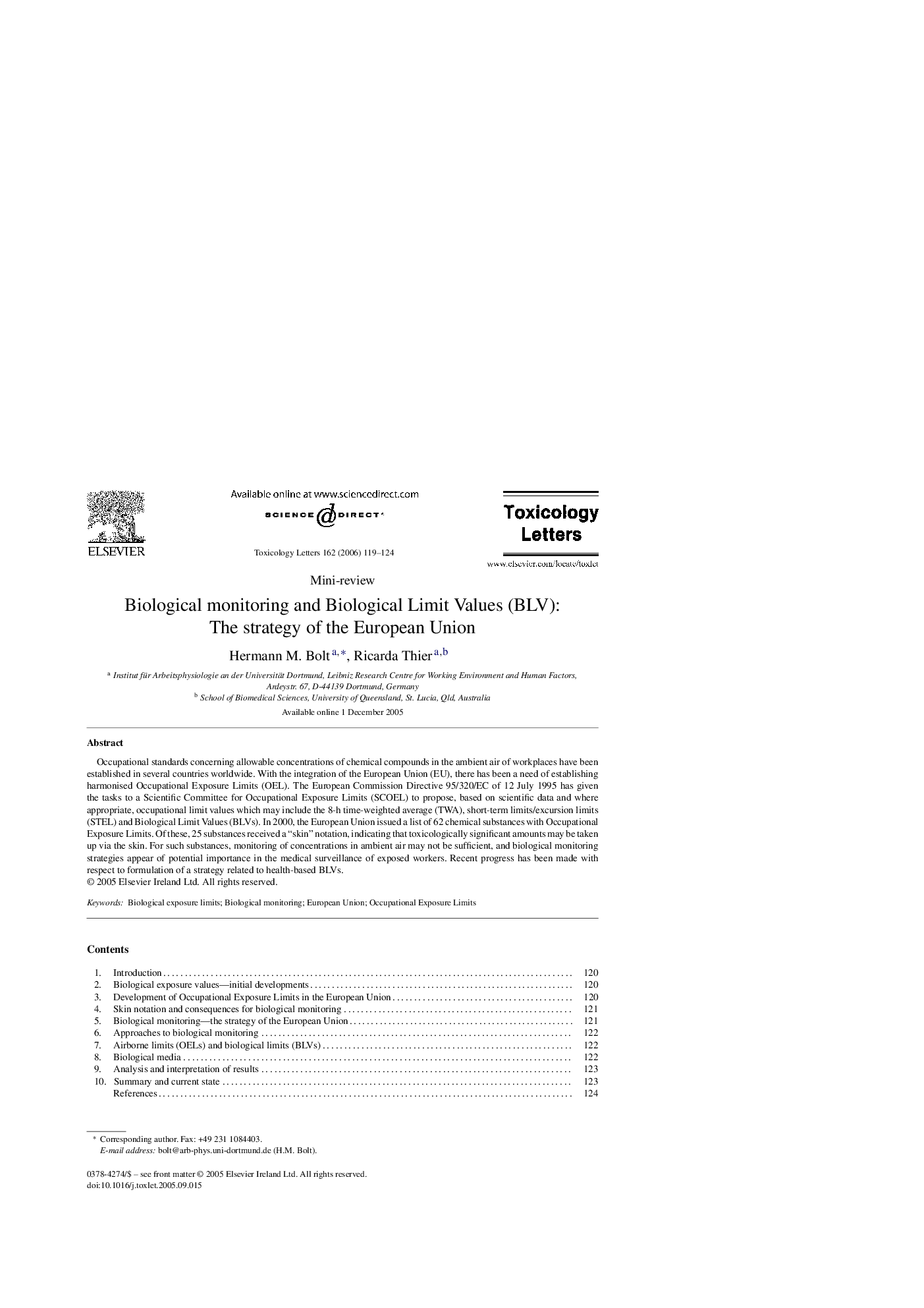| Article ID | Journal | Published Year | Pages | File Type |
|---|---|---|---|---|
| 2601317 | Toxicology Letters | 2006 | 6 Pages |
Occupational standards concerning allowable concentrations of chemical compounds in the ambient air of workplaces have been established in several countries worldwide. With the integration of the European Union (EU), there has been a need of establishing harmonised Occupational Exposure Limits (OEL). The European Commission Directive 95/320/EC of 12 July 1995 has given the tasks to a Scientific Committee for Occupational Exposure Limits (SCOEL) to propose, based on scientific data and where appropriate, occupational limit values which may include the 8-h time-weighted average (TWA), short-term limits/excursion limits (STEL) and Biological Limit Values (BLVs). In 2000, the European Union issued a list of 62 chemical substances with Occupational Exposure Limits. Of these, 25 substances received a “skin” notation, indicating that toxicologically significant amounts may be taken up via the skin. For such substances, monitoring of concentrations in ambient air may not be sufficient, and biological monitoring strategies appear of potential importance in the medical surveillance of exposed workers. Recent progress has been made with respect to formulation of a strategy related to health-based BLVs.
